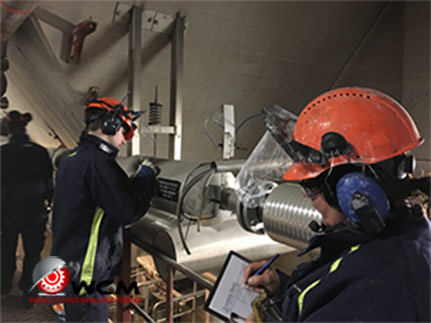
Seiri is the first step of the 5S method. It means "to sort" or organize.
This article introduces Seiri; two more articles follow with more details on "how to" and "what benefits to expect".

Seiri has two main goals:
What "objects" are we talking about? Why remove objects that are not needed?
Redundant objects may range from empty boxes through bins of rejected parts to obsolete machinery. Some objects might have some value but are simply inappropriate, such as a jerry-rigged tool that substitutes for a proper equipment repair.
Too many workplaces are cluttered with things that are no longer required. This does not just apply inside a factory. Offices may have "libraries" of obsolete manuals or binders, or filing cabinets with outdated records that should be archived offsite. Warehouses or repair shops may contain obsolete raw materials, inventory or spare parts. Even bulletin boards can be clogged with outdated notices. Computer systems may also get cluttered with obsolete programs or data that should be archived – although you want your Information Technology department to tackle this area, and to do so carefully.
Here are several good reasons for disposing of unnecessary objects:
Finally, if something is broken or poorly-repaired, either fix it properly or replace it. Jerry-rigged tools tend to be inefficient and hazardous. On the "soft" side, consider the effect on morale and on quality goals if sub-standard tools are acceptable.
What does it mean to "reduce waste"?
This goes beyond simply "reducing waste material" by identifying all hindrances and generating ideas for improvements. Here are some sample questions:
Management must commit employee time and effort to this task, including time to plan and train.
The Seiri step requires teams. The smallest team should have a representative line worker from the production side, as well as a maintenance technician. This gives a more well-rounded perspective during the review. As well, the actual task of logging problems is performed more quickly and more thoroughly by at least two people, rather than by just one.
Supervisors should be included in the teams. If every team has a foreperson or manager, then the team size may be as large as five or eight employees in total. Remember to involve night shift personnel too – either as separate teams or integrating them for the duration of the Seiri step.
The planning step has four outcomes:
The previous article had suggested some questions. Some new ones include:
It is important to cover the whole workplace.

Red Tags and Sort Lists are the primary tools for the Seiri step.
It is best to buy or make pre-numbered red tags, since the numbers allow the issues to be tracked.
The Red Tag needs to have the following information:
Record the same information on the team's Sort List.
Using the Red Tag to "remove unnecessary items" is fairly straightforward. Here is the process.
Each Red Tag gives other workers an opportunity to pass along comments. Typically, a long-time employee might note that "Every four or five years, we have to pick out a few of these parts for customer X who still has an old ZYXW model". So that might reprieve this one bin of spare parts.
After thirty days, each Seiri team retraces their steps to review each Red Tag. If no-one has suggested why an item should be saved rather than discarded, then deal with it. Items that are needed less frequently should be moved to a proper storage area rather than cluttering the shop floor. (Questionable items may go into a "quarantined storage" area. The idea is to log when a quarantined item actually is used. Otherwise, it should eventually be discarded).
Keep the Sort List up-to-date with the same information. Eventually, the team must track down any Red Tags that the Sort List still shows as outstanding – as "not yet handled".
Using the Red Tag to "reduce waste" is similar. The time frame might be longer than the month allocated for discarding unnecessary items. However, the efforts should begin and be continuous. Management support and commitment are critical over the long term.
In this case, the Red Tag shows a suggestion for improvement, such as "Need (updated) work instructions" or "Need tool ABC at this workstation" or "Repair this (broken or jerry-rigged) item". It is unlikely that a worker will comment "No – don't fix it". However, these issues must be copied from the Sort List to the appropriate work order so the improvement will actually be made.
Once the improvement happens, add the information to the Red Tag and return it to the Seiri team. They will check off the Sort List. Again, the team will eventually pursue outstanding Red Tags and ensure that the improvements really occur.
The next article will discuss the benefits of the Seiri step.
The Seiri step is only the start of the 5S process, but some benefits should be felt immediately.
By Oskar Olofsson, author of the book "Succeeding with 5S"
Enhance your 5S implementation and sustenance with our intuitive new app. It offers:
The app is developed by Oskar Olofsson, a renowned Lean expert and acclaimed author of "Succeeding with 5S". Harness the power of Lean management at your fingertips!


Succeeding With Lean Leadership

Succeeding With 5S

Succeeding With Standardized Work